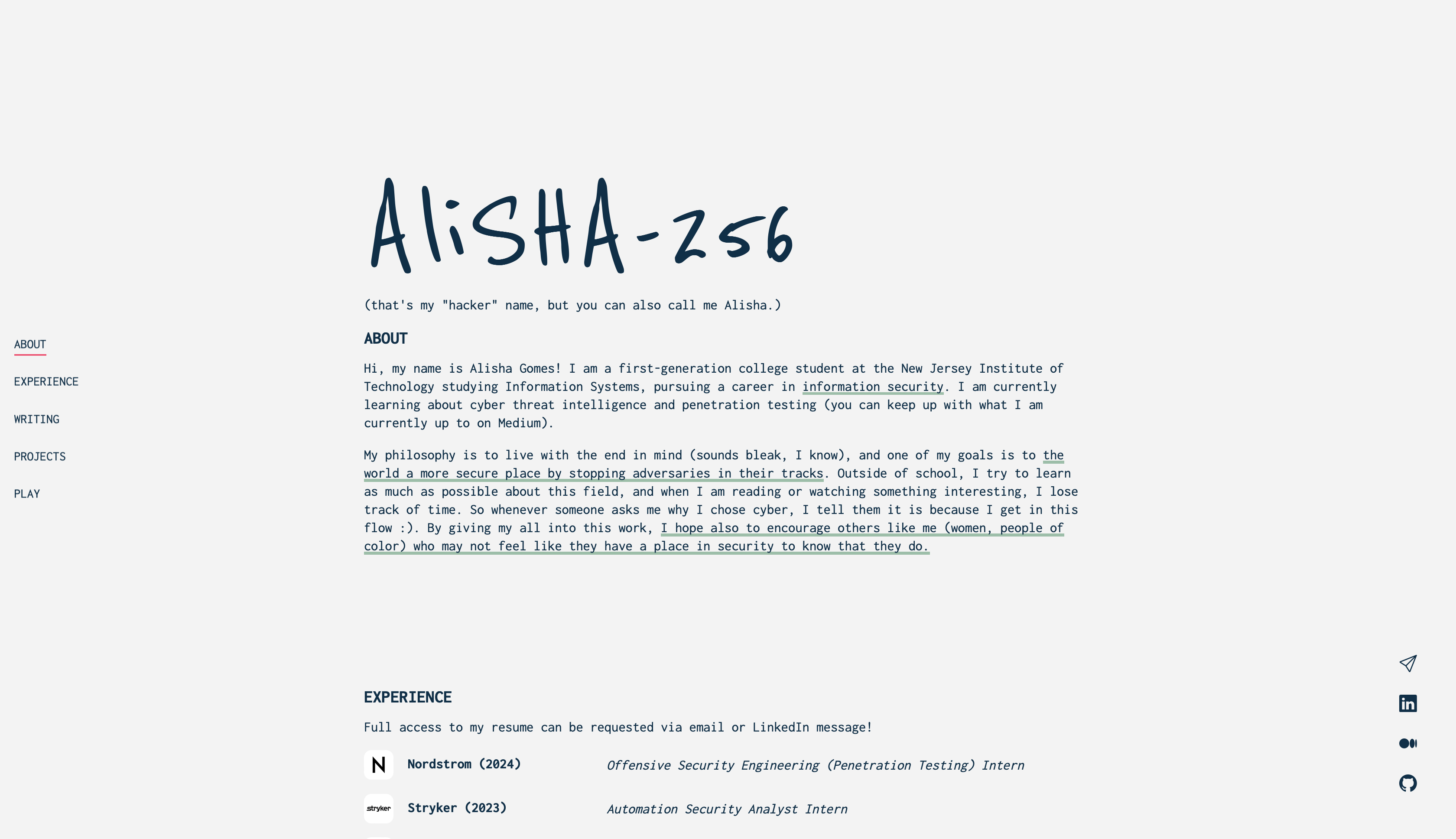After receiving some advice from my security mentor, I started toying with the idea of building my personal website. I ended up creating it from scratch using HTML, CSS, and JavaScript. Here’s how it turned out:

During this time, I was also writing posts about topics in cybersecurity on Medium where I encountered one significant challenge: the intense imposter syndrome I felt every time I posted. I often felt like no one was interested in what I had to say, and that I wasn’t contributing anything new to the security conversation. It would take me hours to edit posts (on top of writing them), which was time-consuming and inefficient. All I wanted to do was write about the things I was learning without the pressure to be unique or share something groundbreaking. I simply wanted to share my insights on a topic without this nagging feeling of inadequacy for not contributing more. I was going on a rabbit-hole on YouTube about how to share what you’re learning online when I came across the idea of a digital garden.
The concept of a digital garden appealed to me because it’s all about creating a space where you don’t have to be performative. Instead of posting fully fledged out posts, you allow yourself to post ideas, no matter how small. Digital gardens are personal wikis, allowing you to share whatever topics and ideas interest you at the moment with your audience.
Digital gardens are dynamic web environments where your ideas and the knowledge you accumulate grow naturally. Digital gardens are meant to take an unconventional approach to blogging, and it embraces the “web of ideas”, mirroring the way our brains process and connect information. In other words, digital gardens reflect how our knowledge evolves through contextualization.
Another aspect of digital gardens is that everything is connected. Posts can relate to one another, which is where linking comes from. Please check out this post from Maggie Appleton to learn more about the history of digital gardens of hypertext. In this post, Appleton describes the concept of digital gardening as a way to structure information in a networked way - a way that makes sense for our brains.
In terms of learning in public, digital gardens are great - especially if you have a workflow that allows you to quickly post to your website. For me, all I have to do is make a simple push to my GitHub repository from Obsidian (I’m using Quartz) to share my thoughts to the world (which is actually a terrifying thought)! This reduces the tendency that we have to constantly review our work before allowing others to see it. Digital gardens encourage their gardeners to note-take, come up with new ideas, and share their learning process to others. The purpose of this digital garden is also part of my mission to make information accessible to everyone, removing any barriers so people can learn freely. I’m personally grateful to all the creators who have shared their knowledge online and I hope to pay that forward by being a source of knowledge for others.
If you’re interested in learning more about the concept of digital gardens, I implore you check out the resources below:
